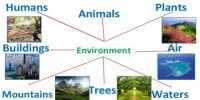The number of high tide floods has been increasing over the past decade due to human-induced climate change. NASA research has now suggested that the effects of the climate crisis in the mid-2030s could reach even more dangerous heights as it coincides with a strange lunar cycle called nutrition. The moon and sun exert a greater gravitational effect on the earth – for example, they are responsible for tides. However, the three organizations are not fully integrated. The orbit of the moon is slightly inclined towards the orbit of the earth around the sun. For this reason, we do not get eclipses every month.
The notation also occurs as a result. The Moon’s position in the Earth’s equator changes respectfully every 18.6 years. During this period, the height of the tide changes in a certain region. When you combine this with sea-level rise and other effects of the climate crisis, you have a recipe for disaster. A study published in the journal Nature Climate Change reported that every U.S. coast would be affected. Many coastal communities are at risk of flooding from high tide. The National Oceanic and Atmospheric Administration (NOAA) reported a total of more than 600 floods in 2019 – and data shows that it could be worse.
While part of the lunar nutrient cycle could easily create enough tides in flood-prone cities, the rest will create lower tides. However, the effects of sea-level rise will make the maximum tide at the top of the next cycle more dangerous. And as the sea level continues to rise, the tides will be lower again, the effects of the lunar almonds will not be so significant and they will still be much higher than they are today.
While these floods may not seem as dramatic as storm intensities, regular floods can lead to equally catastrophic results. Lead author Phil Thompson, from the University of Hawaii, said in a statement, “It will have an effect of freezing over time.” “But if it floods 10 or 15 times a month, no business can keep up with its underwater parking. People may lose their jobs because they can’t find work. Self pools have become a public health problem.”















